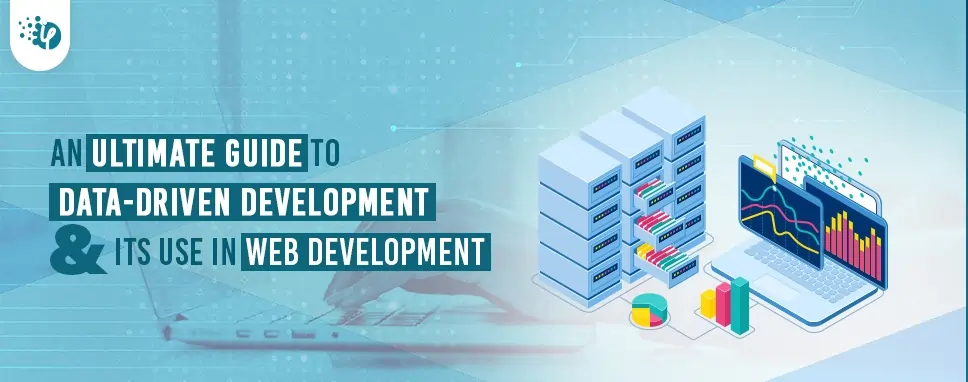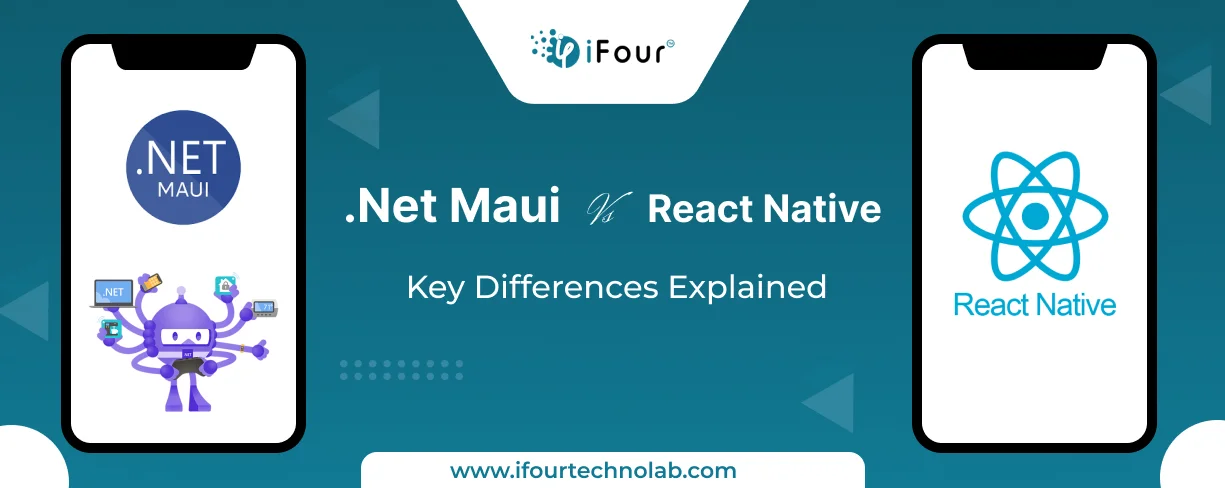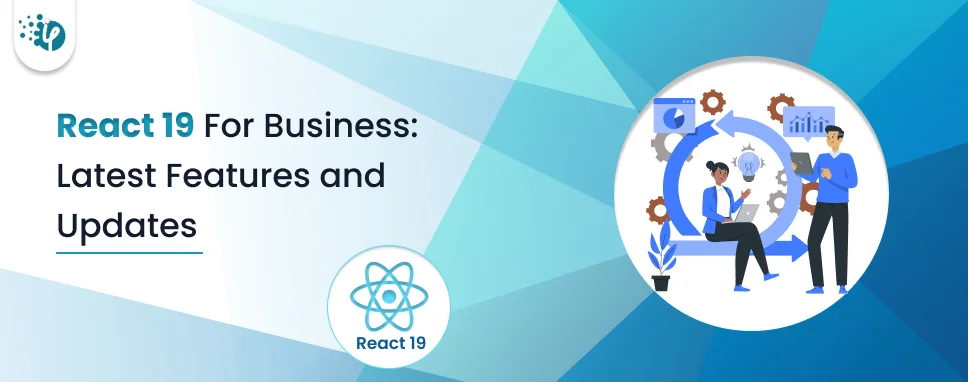.NET MAUI vs React Native for Cross-platform Applications
The dominance of Android, which holds a 71% market share, coupled with iOS supremacy in the US market, shows just how important it is to create apps that work on different platforms....
Listening is fun too.
Straighten your back and cherish with coffee - PLAY !

Data-driven development is a prevalent paradigm in custom software development. This programming approach is distinguished by statements describing what data must meet a specified set of requirements.
In this article, we'll explore the main benefits of Data-driven development, the A/B testing rules, and how they can be applied to web development. In addition, we'll discuss some common challenges and how to overcome them.
Ultimately, we'll provide a general methodology for data-driven web development that can be applied to any company.
When you are developing software, data-driven development is a common concept. This programming paradigm is characterized by statements that describe what data must match a specific set of criteria.
The processing involved is described as well, but not the exact sequence of steps to be followed. These statements are the basis for data-driven programming.
Data-driven development involves the use of metrics, or key performance indicators, to guide the development process. These metrics help developers understand the product better and encourage them to think about what business goals are important to their company.
This approach will ultimately improve profitability. And while it involves collecting and analyzing data, developers must make sure that the metrics they use are actionable. That's why you need to focus on creating a data-driven development process.
A data-driven development approach takes the central role of documents in information technology. The central role of documents is derived from direct access to a multi-model database, which developers can manipulate through transformations. Documents are the lifeblood of information technology.
A simple example is when a web page is accessed by a web browser and the server responds with HTML/JSON. Similarly, a data-driven application can adapt as the business needs change.
In web development, data-driven development has several benefits. First, data from a single source is unidimensional and limited. For this reason, companies should use multiple sources.
On average, companies use five data sources, three of which are external. More than half are aiming to expand their data sources shortly. Data is also often not reliable, which makes it difficult to make decisions based on it.
Lastly, data-driven development allows developers to measure success proactively. By defining benchmarks and standards, developers can easily detect flaws and potential solutions.
Furthermore, data-driven development helps them study future trends and avoid common mistakes. Finally, it saves them precious time and money by identifying the most suitable solutions for problems. These are just a few benefits of data-driven web development.
One of the key benefits of data-driven web development is that it creates an environment of appreciation and understanding. Compared to static websites, customers who feel appreciated and understood are more likely to visit and recommend a site.
The most effective data-driven websites strike a balance between intuitive and engaging user experiences. This is not always possible with innate design. An instinctual approach to website development can lead to a website that lacks the latter and instead creates a frustrating experience that will discourage visitors.
A/B testing rules for data-driven website development start with thorough research into your current website's performance. Gather data on traffic, user behavior, and conversion goals. Use quantitative website analytics tools to identify which pages get the most traffic, and which generate the highest bounce rate. Shortlist these pages for further testing.
For example, you might start by testing the pages that generate the highest revenue potential, or the ones that get the most daily traffic.
Another A/B testing rule involves targeting the right audience. Select a subset of your users, such as the middle-aged head-of-household with a $100,000 annual income. Segment your user base by attributes or other demographics.
Using this approach allows you to test the two versions and focus on the behaviors of the targeted group. The right audience will provide the most accurate results. Listed below are some common A/B testing rules for data-driven web development.
Until recently, most web development has involved programmers writing code. Today, developers must also consider data preparation, cleaning, and curation to help improve their apps.
Data-driven web development combines these three elements and is a trend that's set to continue. Web developers are already taking advantage of AI to analyze every data point and incorporate it into their applications.
This technology can be used to improve the efficiency and personalization of web experiences.
Using data-driven techniques in web development can help businesses increase ROI by creating more appealing and functional websites.
For example, optimal web design helps turn customer demand into sales. For eCommerce websites, incorporating user data analysis can improve navigation and search categories. Using the data-driven design, developers can tailor marketing campaigns based on user behaviors and preferences. Data-driven web design helps websites understand consumer preferences and increase conversion rates.
Data-driven design is an effective way to increase conversions. By incorporating user data into the design process, developers can analyze site traffic and develop more effective designs. Rather than crunching numbers, data is presented in an easy-to-read format to aid users.
Software companies which admire the importance of Multi cloud adoption and data-driven approach could benefit incredibly. Because a data-driven approach could save time and resources and can improve overall user engagement. It can even increase conversions without redesigning the website or making major changes.
A high conversion rate means a successful marketing strategy and exceptional web design. It also means your target customers want what you are selling. Conversion rates depend on several factors, such as the level of interest a visitor has in your products and services, the overall appeal of your website, and its usability.
By using data-driven web development, you can improve your website's conversion rate and make it even more attractive to potential customers.
Using Google Analytics, you can see where your website has friction points, and make changes to increase your conversion rate. For example, if you notice a high cart abandonment rate, you might use popups triggered by exit intent.
Likewise, if you have a low conversion rate, you might consider including a surprise gift that a customer hasn't seen before. Statistics show that 61% of customers believe a small gift keeps them engaged.
How to start your journey toward data-driven design? Typically, data-driven design starts with an audit of your website. This analysis helps identify bottlenecks, dead-ends, and high-traffic pages.
Once you've identified these areas, you can start planning the improvement process. To determine what to improve, you must know where your customers are leaving the site. Once you know where they're going, you can tailor your site to improve their experience.
Once you have gathered all of your data, you can use it to make smarter design decisions. Don't focus on a page with little traffic; instead, focus on pages with lots of traffic and make an educated hypothesis on why your visitors aren't clicking through.
Likewise, data-driven design can be used to identify performance gaps, allowing you to make data-driven decisions during the re-design phase.
A company with a strong data-driven culture often has high-level managers who lead by example. Senior executives of leading tech firms spend at least 30 minutes at the beginning of each meeting reading detailed summaries of proposals and supporting facts.
These executives' behaviors propagate downwards. Employees who want to be taken seriously should speak their leaders' language. A culture that embraces data goes hand in hand with speed.
In one example, a leading global bank created a standard data layer for its marketing department. They focused on a small set of metrics that had the greatest impact on their bottom line.
Instead of building an entire data warehouse, the marketing department could focus on the most relevant data: core loan and marketing channel data. This approach put specific metrics at the top of the C-suite agenda. This led to better decisions on how to allocate resources and ensure employee satisfaction.
As the pace of change continues to increase, the need to digitally transform companies is paramount. Disruptive competition, drastic work-life balance changes, and new requirements for sustainability and traceability are just a few of the things that are driving organizations to adopt a data-driven development strategy.
With the right tools, companies can harness the power of data and turn it into actionable insights in record time. This will improve the quality and speed of decisions while ensuring the success of the entire business.
The idea of data-driven web development is nothing new. Data-driven web design is a method of building websites that combines artistic sense with hard data. By using data to drive design decisions, the goal is to create an experience that appeals to the target audience.
In turn, this leads to increased website traffic and online conversions. Here's what you need to learn about the process. Here are the benefits of data-driven web design.
As with any type of design, it is vital to gather as much data as possible to make the best decisions for your customers. The data-driven design allows you to use qualitative and quantitative feedback to make better design decisions. The approach is based on the concept that data is an integral part of the product team, and it should be treated as such.
After all, data can help you with design decisions and make your products more appealing to your customers.
Looking to complete your documentation faster and better? Connect with coursework writer to get your task done.

The dominance of Android, which holds a 71% market share, coupled with iOS supremacy in the US market, shows just how important it is to create apps that work on different platforms....

React continues to set the standard for building dynamic user interfaces. React 18 introduced significant updates, such as concurrent rendering and automatic batching, which changed...

When I first started exploring React.js for my company’s needs, I felt a bit lost. It was like trying to solve a big puzzle without all the pieces! But as I kept learning and trying them practically, I discovered some really cool features that blew my mind making everything seamlessly easier.